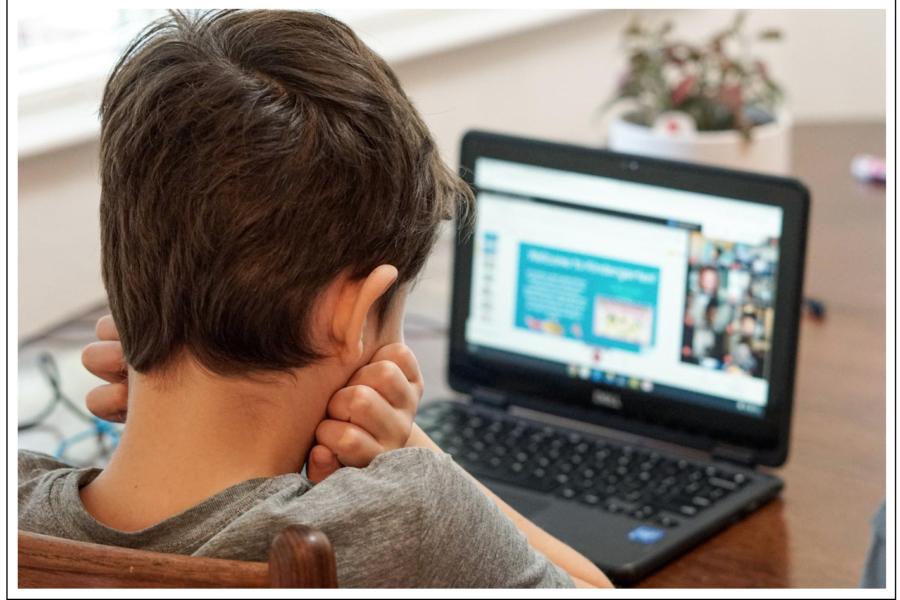
Image Source: Unsplash
Now that fall is officially upon us, children have started the school year, but thanks to COVID-19, it looks a little different.
Schools across the country have taken different approaches when it comes to re-opening. Some states have allowed their schools to re-open in person while others are doing solely virtual learning for the time being. Some schools are even offering hybrid options. So, there’s a good chance your child will be involved in some type of distance learning this year.
As a parent, that can be a difficult concept to fully grasp, especially if you’ve never homeschooled your child. For teachers, though, it’s also no easy feat. From lessons on Zoom to trying to work with both in-person and virtual learners, it can feel a little overwhelming for everyone.
But, keep in mind that it can be overwhelming for your child, too. This isn’t what they’re used to, and they may have a harder time staying engaged. They have also had to deal with quarantining for the last few months, and are likely anxious to see their friends and get their lives back to normal. But, keeping them on a routine and being honest about what’s happening in the world can help them come to terms with distance learning and what to expect.
So, what can you do to keep your child engaged throughout the school year when distance learning is your only option?
Set Your Child Up for Success
First, it’s important to make sure you set ground rules for learning. In essence, your child is “working from home,” so think about what would most benefit you in a remote working situation. In doing so, you can set your child up for success. Try these tips to get started:
- Set goals and expectations with your child
- Have a designated room/space for learning
- Be patient
- Connect with their teachers
- Allow them to be creative and offer time for play/exercise
Even if you have a great set-up and the clearest goals in mind, your child could deal with everything from distractions to feeling discouraged. If you want to keep them engaged with their work, let them tell you how you can help, and acknowledge the effort they are putting in on a daily basis. Praise their efforts, rather than their results, and it can keep them motivated to keep working.
Do what you can to make their daily school activities less dull. If they’re sitting in front of a computer screen all day or doing workbooks, it’s no surprise that they will try to find some way to distract themselves. Take the time to work real-life situations into their curriculum, or focus on different ways of teaching a subject that allows them to be more hands-on. Will it take a bit of creativity? Of course. But, if you want to keep your child engaged, it’s the best thing you can do.
Monitor Screen Time
Your child might have to be on a computer for the majority of the day, whether they’re in a virtual class or doing homework. But, if they choose to stay on the computer, their phone, or to watch television after that, they could be spending almost all of their time in front of a screen.
While it’s good for your child to be able to relax after school, it’s important to strike a healthy balance when it comes to screen time. Too much screen time could cause issues like:
- Trouble focusing
- Headaches
- Blurred vision
- Dry eyes
The American Academy of Pediatrics recommends no more than one hour of screen time each day for children ages 2-5. If you have an older child, they may be able to consume a bit more, but it’s still important to encourage other activities.
Think about some of the things your child might be missing out on this year at school, including gym, recess, or sports. By incorporating some aspects of those things into their routine, they will get moving, stay active, and spend less time in front of a screen. Set aside time for your children to play outside. Or, take a walk around the neighborhood with them every evening. Whatever you can do to make sure your child isn’t staring at a screen all day long will be beneficial, and it can help them to burn off some extra energy, too.
Find Ways to Keep Things “Normal”
There isn’t much that feels normal right now. Even though things keep moving forward, there is still so much uncertainty surrounding the COVID-19 pandemic and what it will mean for the future.
But, when you’re distance learning, one of the best things you can do is to try to create an environment of normalcy for your child. They are undoubtedly missing their friends, teachers, and the familiarity of a classroom. While you may not be able to provide all of those things, you can create some sense of familiarity and normalcy with the resources you use and the activities you plan.
For example, encourage your child to read actual books, rather than reading on their tablet or computer. You could even set up a mini-library in your home where they can “check out” a book, the way they would at school. If they have to read a book as part of the curriculum, create a fun literacy activity like having them dress up as their favorite character, or making a bookmark based on themes of the book.
Another way to help your child feel more like it’s a normal school year is to keep them on the same routine you would for a traditional school day. Some common aspects of their routine could include:
- Waking up at the same time each day
- Getting dressed
- Brushing teeth
- Eating breakfast
Helping your kids manage distance learning may not be easy at times. But, it isn’t impossible, and your children can still learn and grow just as they would with a typical school year. You might learn something along the way, too! Keep these strategies and tips in mind throughout the year to keep your kids engaged and to ensure they make the most of this “new normal.”
Author Bio: Jori Hamilton is an experienced writer residing in the Northwestern U.S. She covers a wide range of subjects but takes a particular interest in covering topics related to child education and parenting. To learn more about Jori, you can follow her on Twitter and LinkedIn.



